Nerd Nite is Going Electric!
Can you hear that buzzing in the air? It’s almost electric! For October Nerd Nite, we are going to see what’s vibrating in the air – from music to electricity to good ol’ radio waves. So tune into Nerd Nite at 6:30pm EST to hear Nathan West get nitty gritty about Telsa vs. Edison, Lavanya Ramanathan wax about how the Beatles rocked DC and we will interrupt our regularly scheduled program to geek out about radios with Tom Rondeau. Be sure to tune in to be there and be square.
Where: DC9 Nightclub at 1940 9th St NW, just south of U St.
When: October 14th, 2017. Doors at 6PM. Show starts at 6:30 and ends around 8:30.
Tickets: Get your tickets here. $10 each.
 Tesla & Edison to Marconi & a Magician: Early problems of wireless communications and why they still haven’t been solved by Nathan West
Tesla & Edison to Marconi & a Magician: Early problems of wireless communications and why they still haven’t been solved by Nathan West
Tesla revolutionized high frequency used in wireless communications. The Marconi telegraph company quickly capitalized on his discoveries to transmit wireless telegraph signals; their marketing, however, took several liberties in technical speak only to be “found out” by a magician. Telsa was further foiled by Edison persuading the US Navy to adopt his methods about the needed infrastructure for communication. These old feuds still pervade the wireless landscape we see today.
Bio: Nathan works at a small company designing wireless modems and formerly worked at the Naval Research Laboratory. He is currently slogging through a PhD applying machine learning to wireless communications and can’t get enough of the surprisingly colorful characters that shaped the communication revolution. He also thinks Edison wasn’t such a bad guy.
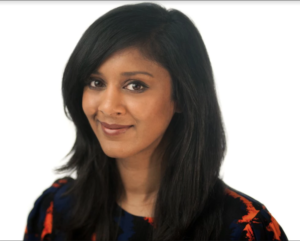 Beatlemania began in a hockey arena in Northeast D.C.: The strange tale of the first American Beatles concert By Lavanya Ramanathan
Beatlemania began in a hockey arena in Northeast D.C.: The strange tale of the first American Beatles concert By Lavanya Ramanathan
Two nights after their landmark “Ed Sullivan” appearance, four slightly overwhelmed young men boarded a train for Washington D.C. for their first live performance stateside; a show that would take place in, of all places, a hockey arena in Northeast Washington. Al Gore was in the audience. The concert was almost derailed by a major snowstorm. Tickets were less than $5. Hear the whole story of how Beatlemania in America kicked off with a very loud, very short concert right here in Washington.
Bio: Lavanya has been a reporter for The Washington Post for 13 years, and a music-head since birth. She’s covered everything from police stories to food and dining and now, what a reader has described to her as “the American mood.” She’s actually agnostic about the Beatles’ music, preferring the Stones. But she loves a good story.
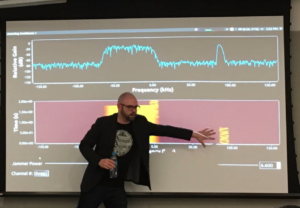 How an actress and composer laid the foundation for the future of wireless communications by Tom Rondeau
How an actress and composer laid the foundation for the future of wireless communications by Tom Rondeau
Within the field of wireless communications, Hedy Lamarr’s story is one of the most well-known. But it’s worth telling again and making sure her story is known by many. This is a story of art, culture, and technology and how it created one of the most important inventions in wireless communications. We’ll explore why the technology is still relevant, and why this story is an inspiration for DARPA’s upcoming Bay Area SDR Hackfest.
Bio: Tom is a Program Manager for DARPA’s Microsystems Technology Office where he continues to work on software radio — the intersection of connectivity and computing. Formerly, Tom was the lead programmer and project maintainer of GNU Radio, a Free and Open Source software radio framework and ecosystem. He received his PhD in electrical engineering from Virginia Tech in 2007 for his work in artificial intelligence and wireless communications (ask him about the award he won for it, we’re sure he’ll be happy to tell you). And second only to Popeye, Tom’s forearms may actually be more famous than he is. I’m sure he’s going to have his sleeves rolled up for everyone to see why.
Nerd Nite Plays Rock, Paper, Scissors!
Just in time for heading back to school, we’re going to get reacquainted with rock, paper, scissors, Nerd Nite style! Get your three-ring binders, textbook covers and new kicks ready to roll. Wendy Bohon will be talking rocks from space, Carrie Smith is going to tell us how to save our paper, and Jill Nelson will make sure you know how to cut the right wire when monitoring a solar eclipse! And we’ll also be welcoming back our special guest host Rachel Pendergrass!
Where: DC9 Nightclub at 1940 9th St NW, just south of U St.
When: September 9th, 2017. Doors at 6PM. Show starts at 6:30 and ends around 8:30.
Tickets: Get your tickets here. $10 each.
We’ll also have t-shirts, buttons and stickers for sale. And, yes, we take credit card!
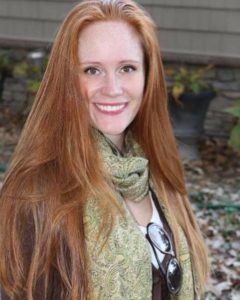
ROCKS FROM SPACE!…or Using ASTER Remote Sensing Data to Make Geologic Maps of Remote Locations in the Ladakh Himalaya
Wendy Bohon started out her academic career in Theatre but after taking a Geology class in college she released her inner science nerd and got a double major in Theatre and Geology from James Madison University. From there she to moved to LA to pursue a career in acting which again got derailed by geology – this time in the form of the Hector Mine earthquake. After that life shaking event she went to work as the Education and Outreach Coordinator for the USGS Earthquake Hazards Program in Pasadena. Finally succumbing to the siren song of science, Wendy went back to school and earned an MSc in Geology from THE Ohio State University and a PhD in Geology/Tectonics from Arizona State University. She now studies earthquakes and mountain building processes and is passionate about science education and communication. Wendy is currently the Informal Education Specialist and Science Communicator for the Incorporated Research Institutions for Seismology and serves on the National Leadership Board for 500 Women Scientists.
 How Not to Ruin Everything: A Brief History and Practical Guide to Book and Paper Conservation
How Not to Ruin Everything: A Brief History and Practical Guide to Book and Paper Conservation
When a machine breaks down, you take it in to get it fixed. But what about your valuable papers, nostalgic photographs, and favorite books? They can get fixed too! And no, not by slapping a piece of Scotch tape over a tear. Come hear about how an Italian flood kickstarted modern conservation, how important museum items stay spiffy, and learn a bit about how to care for your own paper-based items.
Carrie Smith is a librarian and conservator in Washington, DC. She studied book and paper conservation at Camberwell College in London, and has some fancy credentials under her belt, but these days spends most of her time re-watching Dawson’s Creek.
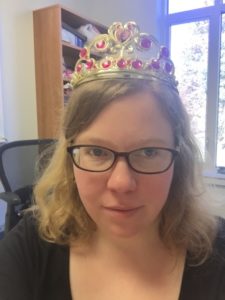
Begging people in North Dakota to build circuits: Citizen science for the solar eclipse
What do radio waves have to do with a solar eclipse? More than you would think. The EclipseMob citizen science project was created to collect radio signals from across the United States during the much-hyped solar eclipse that took place on August 21. 150 people, all in different locations, agreed to build “simple” receivers and record radio signals during the eclipse. Their recordings will be used to improve our understanding of how the earth’s atmosphere (specifically the ionosphere) is affected by an eclipse. Data analysis is in progress and many insights about designing and crowdsourcing an electronics project have already emerged.
Jill Nelson is an associate professor of electrical and computer engineering at George Mason University. Her research focuses on statistical signal processing with applications in target tracking, wireless communications, and now, solar eclipses. She is also active in engineering education research and has a passion for convincing people that engineering is sexy. Developing the EclipseMob project to latch onto the nation’s eclipse obsession seemed like a perfect way to do just that.
Folger Shakespeare Library is joining forces with Nerd Nite for a special event on Friday, September 15, 2017. Tickets are $10 and now on sale. Join us at the Folger Shakespeare Library as Nerd Nite makes it way to Capitol Hill for an evening exploring all of the nerdy ways science and humanities can combine to make great things happen. Our lecturers will take you to Hollywood with the National Academy of Science’s Science and Entertainment Exchange, into the vaults of libraries around the globe to uncover the secrets behind Shakespeare’s coat of arms, and to 20th century Europe as physicist Lise Meitner comes alive on stage.
The event will feature food carts and beer and wine for patrons 21+. (Oh, and we’re still having our regularly scheduled Nerd Nite at DC9 on Saturday, September 9.)
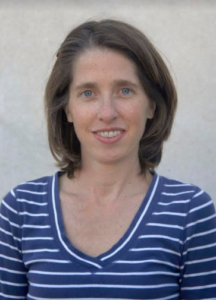 How a Battle Between Two Violent Heralds 400 Years Ago Helps Us Understand Shakespeare Just a Little Bit More… or, How a Headline Got Me in Trouble with the Anti-Shakespeareans by Heather Wolfe
How a Battle Between Two Violent Heralds 400 Years Ago Helps Us Understand Shakespeare Just a Little Bit More… or, How a Headline Got Me in Trouble with the Anti-Shakespeareans by Heather Wolfe
Compared to most people from 400 years ago, we know a ton about Shakespeare We know when he and his children were baptized, married, and buried. We know the house where he was born, what school he attended, where he lived in retirement, and the church where he was buried. We can read his will, property deeds, and tax records, as well as his plays and poetry and the commentary of contemporary critics and admirers of his work. We also have a set of documents, some of them recently discovered, that reveal Shakespeare’s desire to create a lasting reputation for himself and his daughters’ families, through the acquisition of a coat of arms. Heather Wolfe takes us deep into the archives to tell the sordid tale of the cantankerous herald who granted Shakespeare’s father a coat of arms in the first place and the equally cantankerous herald who attempted to discredit the grant. Along the way, she’ll explain how the media’s obsession with the Shakespeare authorship question forced her to defend and explain the manuscript evidence very, very, very carefully.
Heather Wolfe is curator of manuscripts at the Folger Shakespeare Library, where she has worked since 2000. She learned how to read and love Renaissance handwriting and manuscripts while getting her PhD in Renaissance English Literature at the University of Cambridge, followed by an MLIS at UCLA. She’s the curator of shakespearedocumented.org and the principal investigator behind Early Modern Manuscripts Online (emmo.folger.edu), a project in its early stages to crowdsource, transcribe, and publish online as many English manuscripts from the sixteenth and seventeenth centuries as humanly possible. When she’s not in the vault, she’s seeking out new local breweries, sleeping in the woods, and training for long distance races.
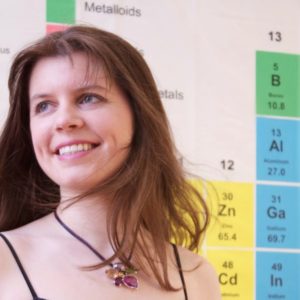 How Lise Meitner’s Discovery of Nuclear Fission Still Inspires Astronomers to Lift the Last Star Stuff Secrets by Anna Frebel
How Lise Meitner’s Discovery of Nuclear Fission Still Inspires Astronomers to Lift the Last Star Stuff Secrets by Anna Frebel
In December 1938, Lise Meitner discovered the process of nuclear fission. Having fled to Sweden to escape anti-Jewish persecution, the Austrian-German physics professor changed the course of science and the world in many ways. Through a living history portrayal by MIT astrophysicist Anna Frebel, the audience will participate in this discovery and its consequences. The scene then changes to 2017. Astrophysicists use cosmic objects and modern knowledge on fission to finally complete, some 80 years later, our understanding of the production of all the heaviest elements in the periodic table.
Anna Frebel is an Associate Professor of Physics at MIT. She received her PhD from the Australian National University and did postdoctoral work at the University of Texas (Austin) and the Harvard-Smithsonian Center for Astrophysics. For her research into the oldest stars in the universe and the early evolution of the chemical elements, she has received numerous scientific awards. In 2016, she was named one of ScienceNews Magazine’s 10 scientists to watch. She is the co-founder of STEM on Stage, a STEAM initiative to promote narrative science through living history theater and film. Frebel is also the author of the popular science book Searching for the Oldest Stars: Ancient Relics from the Early Universe.
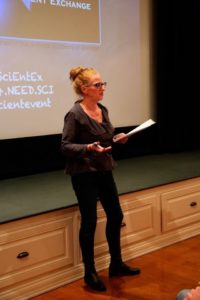 Science & Hollywood: Star-crossed Lovers Find Happiness (At Last) by Ann G. Merchant
Science & Hollywood: Star-crossed Lovers Find Happiness (At Last) by Ann G. Merchant
Ann G. Merchant joins us from The National Academies of Science, Engineering, and Medicine, perhaps one of the nerdiest places to work in all of Washington, DC and Ann Merchant has been there for… well, for a really long time, so she would know. But nerds are pretty glamorous these days and geeks are super chic so it may not be especially surprising that her job as the Deputy Executive Director for Communications is actually pretty cool. When she’s not hanging out in Einstein’s lap chatting about E=mc^2 and gravitational waves with visitors who come by the National Academy of Sciences building for a photo of the famous bronzed scientist, she’s at her desk (or more likely on an airplane) working on a variety of innovative outreach programs that are designed to make people fall in love with science.
In 2008, she spiked the water in a committee meeting with a secret combination of tasteless herbs and roots that made the attendees strangely agreeable and especially brave and got everyone to vote yes on launching a formal collaboration between the NAS and members of the Hollywood creative community. Or maybe it was the data and research she provided that demonstrated the power that film and television have to influence public perceptions, attitudes, and even behavior. Regardless, The Science & Entertainment Exchange was born and she was ultimately instrumental in launching and now overseeing this program that connects entertainment industry professionals with top scientists and engineers. She does lots of other stuff too but no one really cares about that because The Exchange is way more interesting.
 Tesla & Edison to Marconi & a Magician: Early problems of wireless communications and why they still haven’t been solved by Nathan West
Tesla & Edison to Marconi & a Magician: Early problems of wireless communications and why they still haven’t been solved by Nathan West Beatlemania began in a hockey arena in Northeast D.C.: The strange tale of the first American Beatles concert By Lavanya Ramanathan
Beatlemania began in a hockey arena in Northeast D.C.: The strange tale of the first American Beatles concert By Lavanya Ramanathan





